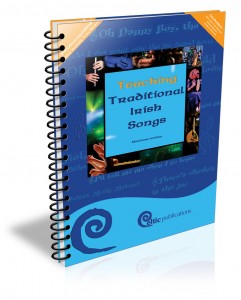Traditional Irish Music
Music is a big part of Irish culture. Most young children learn an instrument at school or special music classes. The harp is our national emblem and all of our coins are stamped with this symbol. Guinness also uses the harp as their symbol.
Harpists were very important in ancient Ireland. A king or lord invited a harpist, also called a bard, to play in his castle when he had a party. The harpist wrote and sang songs about how strong the king was or how good he was at fighting, etc. Another type of ancient Irish music is “sean nós”, which means “old style” in Irish. This type of music was sung by one person without any musical instruments. It took many years of practice before a singer could perform this music well. Sadly, both of these types of music were almost completely lost when Ireland was colonised by Britain. The music we now call traditional music was played during those years as well, but people did not respect it as much, rather like today’s pop music. This type of music has changed a lot over the centuries.
The biggest change to traditional music in Ireland was the loss of the Irish language when English was introduced and enforced as the first language. Some areas of the country, mostly in the west of Ireland, continued to speak mostly in Irish. There are still a lot of songs in Irish known today because of these people, however, a lot of tunes were lost because people did not write down the music. Children learnt the music from their parents or else musicians imitated others. This caused problems, especially after the Irish Famine, when people who knew the tunes had either died or emigrated.
Most new songs are now written in English. A lot of these songs are about the sadness of emigration or rebellion against the British. Songs about a named location in Ireland were very popular among emigrants, e.g. “The Fields of Athenry” and “Spancil Hill”.
A traditional Irish song is never played the same twice. Each musician or singer changes the song slightly when they sing. They never change it too much, however, or else they would not be able to play with other musicians. This is perhaps the most important characteristic of Irish music. Irish people rarely sit quietly and listen in silence to music as some other cultures do. Irish musicians always try to “get a session going”, to get as many people involved as possible. The singers and the dancers are as important to the music as the musicians themselves.
Dancing skills are highly valued in Ireland. Dancing teachers are as respected as musicians and lessons are taken very seriously. Traditionally only the men would tap the floor loudly with their shoes, as in the famous “Riverdance”. Women were expected to step gracefully and quietly.
Teaching Traditional Irish Songs

